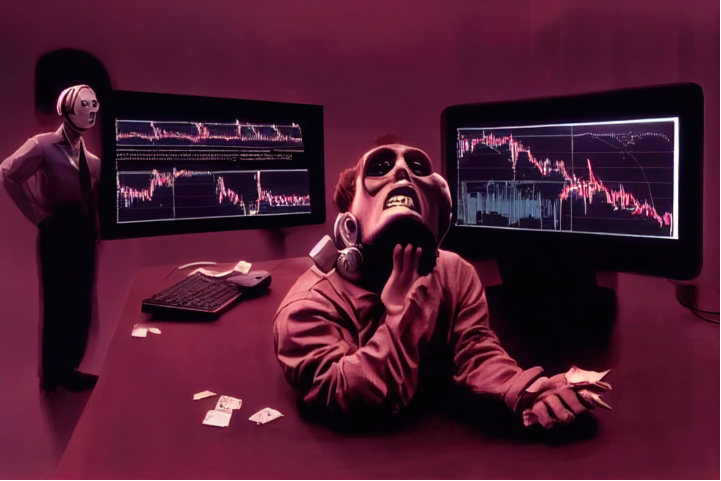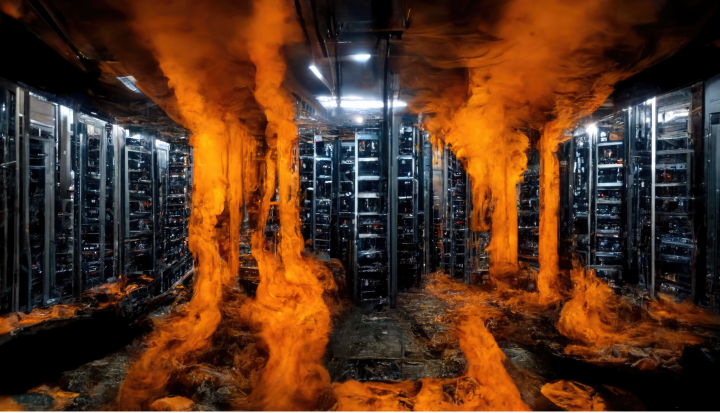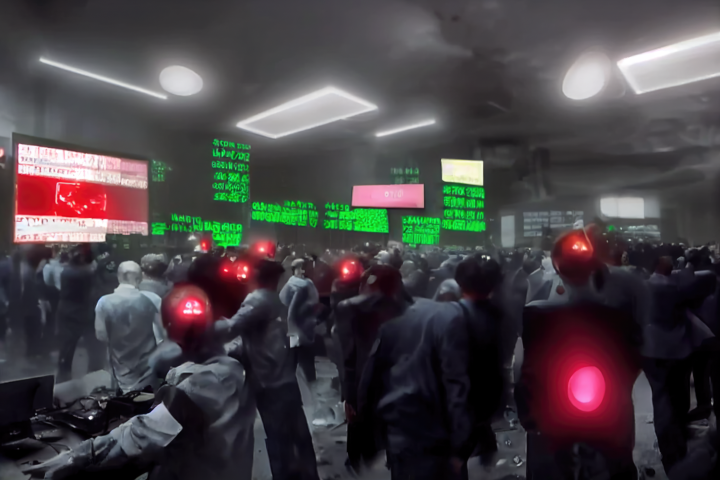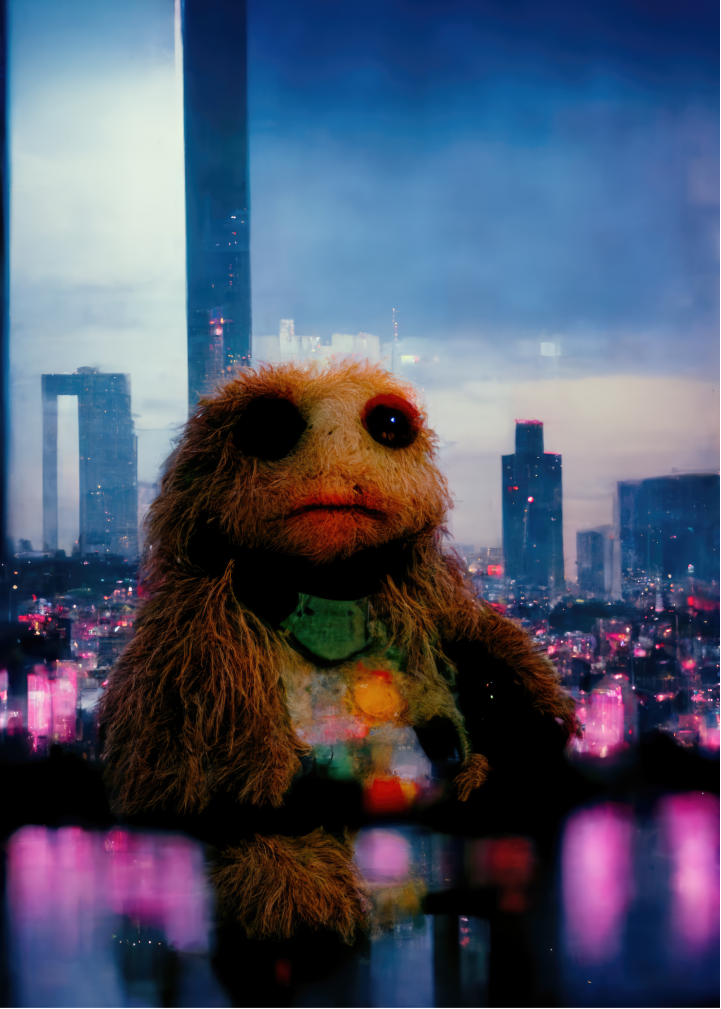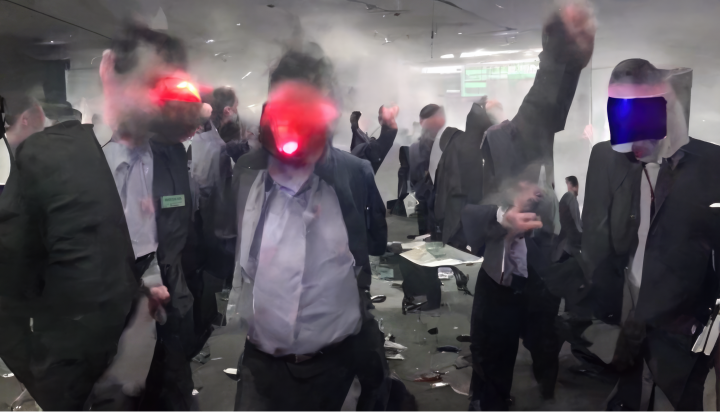

Jon Rafman
by Yana Malysheva-Jones
I am scrolling down Jon Rafman’s Instagram official page with a blue official tick confirming his personality. Confirming.
I scroll down to the bottom, to the very beginning of his page, occasionally liking posts that seem more clear and clean to me, looking more like references to and inspirations for the body of work Rafman has been producing in the last several years.
I keep thinking of the blue ‘tick’ next to Rafman’s username and I wonder what does one of the most prominent western artists of our time think of it, taking his high critique and satire of the post-Internet, postmodernist, post-industrial, posthuman and post-everything world? Does living in safe and boring, first-world Canada help him deal with the western world realities and his own works?
What is more likely is that his works are his way of dealing with all of it. Almost like in an act of vomiting when he liberates himself of everything that is literally hard to digest. And in Rafman’s case digestion includes his heart and brain. To me he is clearly a very sensitive man and his art seems to be almost a survival mechanism, a form of therapy in a way.
I am trying to imagine what kind of person he is – quiet, loud, awkward, shy, grotesque – probably all of them of course. We all are complicated and complex.
This complexity clearly stands out in Rafman’s practice. Overused, overstimulated, over-consumed and over-everything way of life of modern Western society gives the artist a place for an infinite reactive and thought process, almost like a loop that goes on and on into the abyss of reality. It almost feels like a new form of art, quantum art with a multitude of possibilities to experience and tell a story. A multitude of possibilities to express one’s complexity as a human – even in the way one reacts to his works – confused at first, probably disgusted soon after, then interested and finally drawn into the imagery without being able to turn your gaze away.
It is like Rafman’s body of work that is probably most known to the public, Nine Eyes of Google Street View that was created way ahead of its time in 2009. We hardly knew what it was all about back then, but now we don’t just know. Its questions have become our reality.
Who are those people in the photographs? Why them? Why in that position? Should we cover their faces to hide their identities? If these people in the photos are published all over the world, should we ask their permission and pay them a commission? Who do these images belong to? Rafman? The gallery? Google? The subjects of the photographs?
For example, the most impressive book on the subject, Shoshanna Zuboff’s The Age of Surveillance Capitalism, came out only nine years after Nine Eyes of Google Street View, in 2018. It gave many facts and much food for thought regarding surveillance. However, it seems that Rafman sensed it all already back then. His images are a look into the future, a prophecy in a way. Not only in what surveillance will lead us to but also in all the fundamental questions of our modern days – what is all this? Whom do we belong to? Is there such a thing as freedom and a private life? What do we grip onto to get any sense of it all? What are the pillars of existence?
Maybe that is why, for me, Rafman’s work is clearly full of mythology, archetypes and symbolism, through which humanity has been trying to comprehend itself for eternity. It brings together typical images probably recognised by the majority of us. Bulls’ heads, gods’ armour, sleek bodies of elfs and sirens, Campbell’s Heros and Murdock’s The Heroine’s Journey. It is not necessarily that the artist illustrates myths himself or reinterprets them, rather that he gathers them altogether in one place, often one becoming another on the go in his videos like in his Dream Journal (2016-2019), replicating constant changing and growing that humanity has been enduring since the beginning of time. Even if we as spectators do not fully understand what is happening on the screen in front of us, nor whether this is really art, it definitely lands on some intuitive, primitive level – something Jung found and called collective subconscious. His works are mythical and religious, critical and kind, mysterious, but they also feel very familiar.
Rafman’s fascination with information technology and artificial intelligence and its potential becomes the main communication tool for his ideas. How he uses it skillfully placing symbols of modernity like Mountain Dew cans, or Made in China stickers and totems of his own fantasy world, sometimes referencing and finding inspiration in works of other artists and computer games (most of Rafman’s humans do look like Sims characters, don’t they?) really intrigues and amazes me. I also like how he uses voice and sound in his works, going against a common notion that there cannot be too much sound in an arty video, or that it cannot be too complicated. He does the opposite – he puts everything together at the same time, making it too much, too noisy – and this fact itself becomes a very precise, very articulate commentary on the world – it has become too much and it is surely on its way to blowing up.
I skip to his other Instagram page (no blue ticks attached) @ronjafman – almost like he has asked his beloved AI to name it. And this page is almost solely dedicated to the images created by the robot and Rafman in tandem. There are not many of them and I wonder why he decided to split the two.
After some minutes of scrolling and looking closer, I decide not to dwell on the question. I just don’t understand and maybe he doesn’t either. Same with his art – I can write many more pages trying to get to grips with and analyse it, find sense and meaning in his countless charades. But the truth is that what Rafman does is clearly ungrippable, ungraspable – words that I think he might like. That is what so-called real art should be about, shouldn’t it?
I show Jon’s works to some friends who are not so familiar with much contemporary art, but they are the generation who were born when I was already menstruating – they laugh at the artist’s videos non-stop, saying that it seems like Jon was just randomly having fun creating all this – there seems to be no logic or particular patterns. In their opinion, it’s purely created in the moment with no particular agenda – just for fun – I think it is important to repeat this phrase. I really like their opinion, because it speaks not only of his works, but also about the gap between our generations, between our attitudes on life. In their response I somehow clearly see how much these younger guys are frustrated about life and its meaning even more than me – born in the late 1980s and brought up in the post-Soviet, pre-aggressively capitalistic era. I mean these guys don’t even know what it’s like to live without the Internet or mobile phones. They hadn’t seen Jon’s aesthetics when it was all we had. While they were born in the 2000s, I entered these times with what they now call ‘purposefully amateur’, very basic graphics. They love my story when I tell them that my nickname in ICQ messenger was ‘tractoristka’ (‘female tractor driver’) and ‘conky’ in chats when they just started and only years later did I realise this word means ‘big-nosed – back then I just had a random t-shirt from a Russian post-Soviet market with ‘conky’ written on at least a hundred times – maybe it was one of the first things that was sold in my small Siberian town that was actually Made in China.
For this article the CCULDESACC team exclusively received images from Jon that explore the subject of money and capitalism. What I find fascinating in them is that his storytelling focuses on a figure, an individual rather than a ‘collective’ understanding and interpretation of the events.
As constant consumers of images and videos, we are used to the paradigm of a generalised description and wording of something that humanity is experiencing as a collective body. Rafman, in his turn, focuses on internalising the pain, suffering and frustration that these ‘big bangs’ and big things create in individuals.
A not very nice famous man (Stalin) once said that ‘The death of one man is a tragedy. The death of a million is a statistic’.
In this way I see Rafman’s work as an ode to this one man who, falling from what seems to be a 9/11 building, showing his horror and screaming: “Look at me!!! I’m not just a body falling from the symbol of one of the biggest American tragedies – I am real! I am feeling pain! My only life is about to end! Look at me, not at the buildings and news reports!” The same applies to the face burning in horror in what seems to be a stock market office – Rafman leaves those big events as decorations of a play, rather than making them main characters.
There is also an image where Jon almost resurrects this one man – making him not fall but rise to the Twin Towers, placing flowers at the bottom of his feet.
It is true that we are made or even pushed to believe that political, social and any other paradigms are above our personal experiences. That they somehow come first. In the end, it seems that each one of us is living not through our own personal journey but rather marching through life as someone representing something – capitalism, a minority, communism, the hippie movement, anarchism, etc. Even though we all, as humans, need to belong, our society took a really twisted turn in on itself and fell in love with labels. ‘Made in China’ then becomes not just a symbol of overconsumption, but of the general structure of society – we are all labeled. Or just labels.
If we imagine media storytelling as a spiral, then it is obvious that the parts on the outside are what we see in news – big events and political agendas twirling into the spiral’s core where one simple life of one man is. What Rafman does is that he twists the spiral and brings the core of it to the surface, making us see what it actually feels like to be a label, not an individual. And it is horrifying.
The only image that leaves me baffled is this little cute creature standing on one leg with big city lights in the background. Who is it? I just want to hold him in my arms and, looking at the city in the distance, tell him and myself that we all gonna be alright. What a bittersweet tender lie.
As I mentioned above it seems to me that Rafman’s works are full of mythology. In the book Flying Too Close to the Sun. Myths in Art From Classical to Contemporary, I read that the nature of myths is their infinite capacity to be constantly retold, reinterpreted, remastered:
«The stories themselves may seem implausible and bewildering, monsters and hybrid creatures abound, magical transformations are frequent (from human to animal or plant, from god to human or animal, and everything in between), and the personal lives of gods and humans intertwine. Yet these compelling tales have endured for millenia and have become part of the DNA of western culture. Not only are they filled with drama, but they represent aspects of the human condition that are as relevant now as when the Greeks first imagined them, creating stories of gods made in the image of human beings. These myths explore love and lust, envy and rage, rejection and loss, violence and death, and every type of family relationship. We relate to the characters in them because their emotions, desires and struggles are our own.»
And then I think whether it is possible that rather than just reinterpreting old myths, Rafman actually creates new ones - for the generations of my friends I mentioned above and the one that my five-year-old son belongs to. In a way, what the artist does in his works is capture the symbols of modernity that are highly material but he gives them to us in his highly digital manner. It is also quite fascinating how he does it using exactly the tools and instruments of the web - the very thing that progresses humanity into a non-material, more isolated world that is growing to be more and more abstract and uncertain, politically and morally.
Speaking about my son and Rafman’s works – there is YouTube, of course, which I never really dared to avoid in my child’s upbringing. How could I, if it is a part of my own life? To me it’s the same as drinking Coca-Cola out of a three litre bottle in front of my son’s eyes and telling him it’s dangerous and he can’t have it. But I never realised how much of hirnya there is for children out there. Hirnya is a Russian word that Google Translator equates to bullshit in English. Well, mate, it’s not really that. It’s more like some nonsense, some weird videos connecting all the unconnected favourite kids characters in one place with weird sounds and a very strong ADD vibe. In a way, I think some of Rafman’s works are hirnya. Something I wish I didn’t want my son and myself to watch, but we still do and we get addicted to it. Is our modernity hirnya then? If so, then Jon really sees it all somehow and tells us about it through his creations, whether it be videos, digital photographs, collages or any other forms that he brings to the screen.
I pick up his work Disasters Under the Sun specifically searching on Google whether he’s done something based on the myth of Icarus – it seems like he hasn’t, but in the process I started doubting it. Is this work actually about us all, Icaruses in our own ways and as a collective body who at some point in history mistook ourselves for gods and maybe suns even, but clearly stayed and are burning under it? This short video with its’ rhythm, its’ storyline (if there is any, but I clearly see one) makes me anxious and worried, it clutches my stomach as I really feel for those blue digital figurines (why blue?) as they rush through their painful journey being smashed and thrown around on the go, escaping something that is punishing them. The sun, I guess? The ending is happy, though – we really are addicted to them, aren’t we.
I watch the video on Rafman’s official YouTube channel. I scroll the comments, 21 in total:
Guangyi Shen 2 years ago
«man I love your work so much. always the closest visual rendition of dreams I’ve ever seen. feel weirdly peaceful, detached, but excited (and urgent at times) all at the same time, as if I’m watching my own dream, especially the flying through the clouds part. such an awesome, elegant, and poetic piece.»
Greg 2 years ago
«To me this deeply evokes a sense of horror at the dehumanization inherent in acts of preventable (or deliberate) mass casualty. The ‘I don’t feel well’ is so vulnerable and humanizing. I’m on the verge of tears.»
Ming’s Makeup 2 years ago
«I watched it today at the nazi documentation center in Munich at the Karlsplatz. Was it made precisely for this context? The sinister yet unfathomable mood of the movie really lured me in. I have so many questions yet i feel. It deeply touched me.»
chopincj 2 years ago
«So silly and abstract, with characters played by blue people, yet the ideas and emotions conveyed are so impactful (with the help of the sound design), it’s impossible not to feel anything by the end of the piece»
Francisco Araujo 1 year ago
«Awesome!»
Stefix 2 years ago
«the legend uploaded»
дмитрий кочергин 1 year ago
«Great visual experience..
Thank You»
rick 2 years ago
«Yay, a happy ending»
TAXX PAYERMONEY 2 years ago
«very nice»
nef m __ 2 years ago
«i can relate bro 🙂»
golden deagle 2 years ago
«wow»
Jim Hall 5 months ago
«Well, I did before I watched this. But now… I DON’T FEEL WELL.»
maketimmycry 2 years ago
«My interpretation of this series is that it takes place inside the mind of a malevolent computer. Sort of like the AI in “I have no mouth but I must scream” but its still in some sort of simulation phase. The test dummies are blueprints of humans beings that will be subjected to experiments inside a horrific virtual complex.»
twee whistler 1 month ago
«>feared I was pregnant.
>watched this
>my period started flooding.
I’m not joking… ʘ-ʘ j-jon»
Angel Starbath 2 years ago
«Bloodcleanse»
Timaeus Testified 4 month ago
«its ok but i still think youre name should be jon flopman»
Jacopo cardinaux 2 years ago
«is this art??????
fuck we are in the worst possible world
I think they pretty much say it all.
I’d like to finish my essay with words taken from one of them: I have so many questions yet i feel. It deeply touched me.
…
P.S. Am I actually allowed to make those people’s public comments a part of my text? What do you think, Jon?
Further reading: bla bla bla.
Actually:
Shoshana Zuboff The Age of Surveillance Capitalism
John Campbell The Hero’s Journey
Maureen Murdock The Heroine’s Journey
Flying Too Close To The Sun
